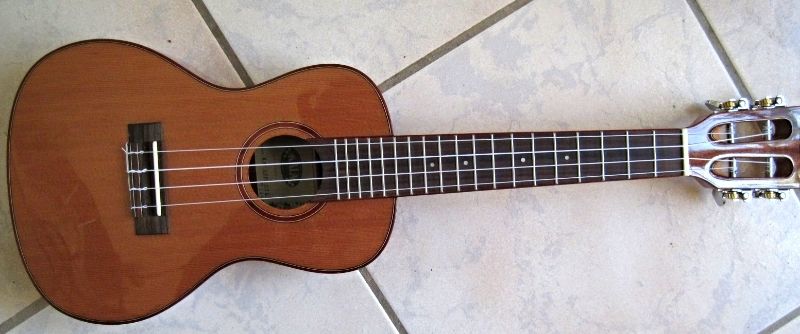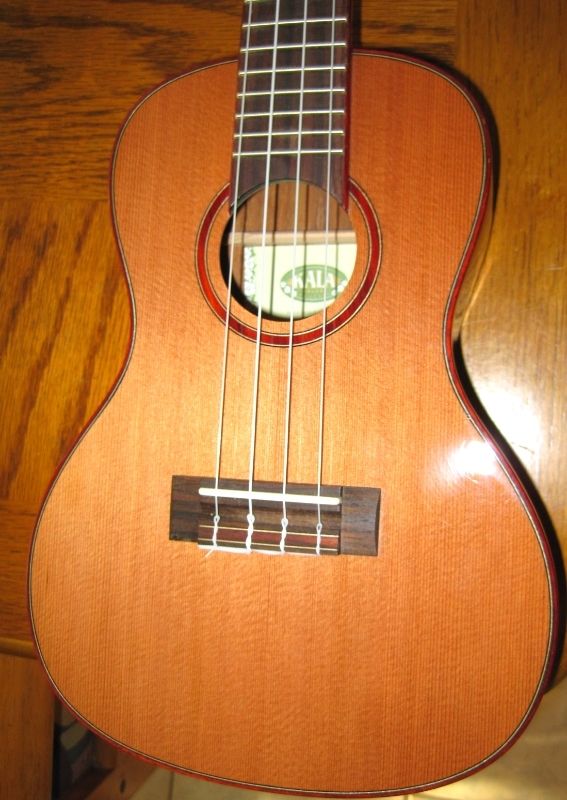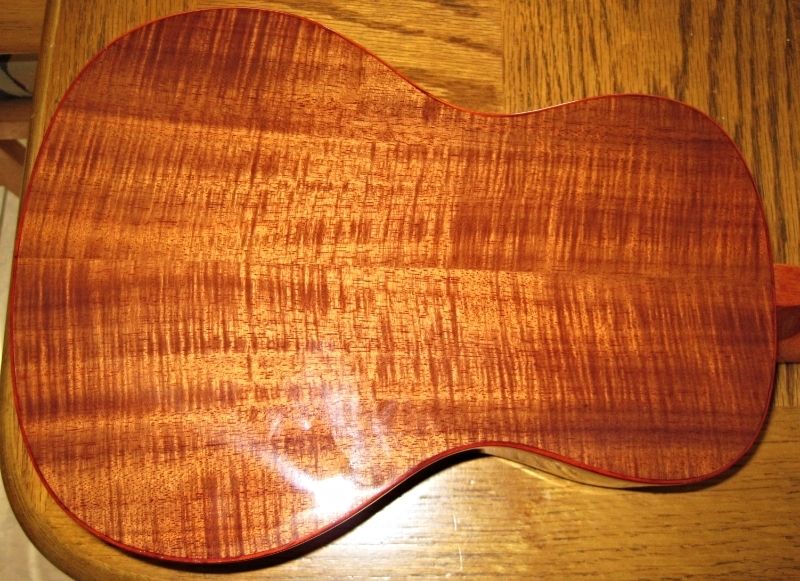SOUND SAMPLE: Here is a sound sample made with the Aquila Strings:
https://app.box.com/s/lvd2fvtec5fyfhrhpjoea6jfau5tjhiu
OK I'm going to eat a little crow because I'm one of those people who has been saying - if you've got some high end ukes you aren't going to be happy with a Kala.
So yesterday I visited a local music shop and they had a bunch of new Kalas. The owner was telling me that Kala has a new factory and was going on and on about how much he liked the new Kalas.
I started playing some of them. There was a slotted head stock concert with a cedar top and Acacia back and sides. (Normally I like Koa but not Acacia). The top was solid but the back and sides were laminated. I really liked it. The sound was very lively with good treble and sustain. It had a 14 fret join and very pretty.
He was asking $250 for it which seemed quite reasonable, so I bought it. And I have to say its a very nice uke. The fit and finish is excellent. The gloss is not too heavy. The sound is resonant. I don't care for the Aquila strings but they do pretty well on this uke. I was amazed that they even managed to properly book match the sides. I'm hoping to get the time to make a sound sample with the Aquilas then switch them out for some fluorocarbon strings and see how they compare.
I do have two issues. First Kala went to the trouble to do a really good job of finishing the uke but the inside of the slots on the headstock are badly finished. This is a minor nit. The other issue, which for me is serious is that the frets they use are cheap and too thick. While the uke looks and sounds good, the feel of the fretboard is the feel of a cheap uke which definitely undermines my enjoyment of it. I have to say I am seriously impressed for the price. With the solid top it does not sound like a laminate. And they managed to make the acacia look like curly Koa which is cool
Here are some pictures.



https://app.box.com/s/lvd2fvtec5fyfhrhpjoea6jfau5tjhiu
OK I'm going to eat a little crow because I'm one of those people who has been saying - if you've got some high end ukes you aren't going to be happy with a Kala.
So yesterday I visited a local music shop and they had a bunch of new Kalas. The owner was telling me that Kala has a new factory and was going on and on about how much he liked the new Kalas.
I started playing some of them. There was a slotted head stock concert with a cedar top and Acacia back and sides. (Normally I like Koa but not Acacia). The top was solid but the back and sides were laminated. I really liked it. The sound was very lively with good treble and sustain. It had a 14 fret join and very pretty.
He was asking $250 for it which seemed quite reasonable, so I bought it. And I have to say its a very nice uke. The fit and finish is excellent. The gloss is not too heavy. The sound is resonant. I don't care for the Aquila strings but they do pretty well on this uke. I was amazed that they even managed to properly book match the sides. I'm hoping to get the time to make a sound sample with the Aquilas then switch them out for some fluorocarbon strings and see how they compare.
I do have two issues. First Kala went to the trouble to do a really good job of finishing the uke but the inside of the slots on the headstock are badly finished. This is a minor nit. The other issue, which for me is serious is that the frets they use are cheap and too thick. While the uke looks and sounds good, the feel of the fretboard is the feel of a cheap uke which definitely undermines my enjoyment of it. I have to say I am seriously impressed for the price. With the solid top it does not sound like a laminate. And they managed to make the acacia look like curly Koa which is cool
Here are some pictures.



Last edited:
